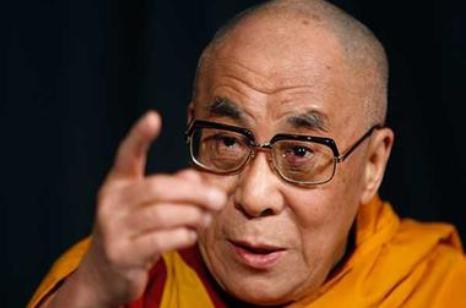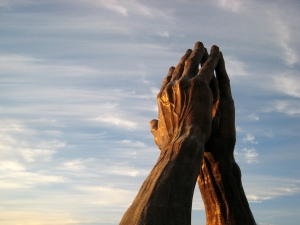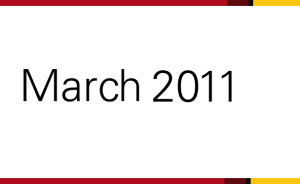Faith Diplomacy: Religion and Global Publics Media Monitor Report
Faith-based Engagement as a Tool for Public Diplomacy
Faith Diplomacy, the use of religion to communicate with global publics and its incorporation into foreign policy, is an element of international engagement that cannot be dismissed. Mutual understanding is a key pillar of public diplomacy and religion is often the core of national identity. Post-9/11, and arguably even pre-9/11, religion finds itself at the core of some of the greatest diplomatic puzzles. It is therefore imperative that faith-based organizations and leaders are enlisted to help better engage foreign communities. This goes beyond simply facilitating interreligious dialogue and should involve engaging religious leaders in peace-keeping and peace-building efforts.
Many believe that religion and diplomacy are crucial to their shared goals of pursuing the common good. Miguel Diaz, the U.S. Ambassador to the Vatican recently declared his enthusiastic support for utilizing religious agents and organizations to better address diplomatic challenges, noting that it is a central part of the U.S. mission at the Holy See. The Ambassador highlighted the fact that religion does not exist in a vacuum, but instead works as a unifier that binds people together. “Diplomatic halls today may not contain the kind of explicit religious and mythological imagery found in places like the Doge’s Palace in Venice,” he said. “But there is no doubt that religious ideas and actors remain indispensable tools in the pursuit of peace and justice and the good that must be commonly constructed.”
With the recent popular uprisings across the Middle East, the Center for American Progress has questioned the United States Commission on International Religious Freedom’s approach to issues of religious freedom. In a recent CAP article, the author disputes U.S. CIRF’s take on religious freedom as a matter of “rights,” and argues that it does not take into account the fact that many members of the global community regard religion as an element of “identity.” Understanding the impact of religious freedom is essential in creating effective foreign policy and building diplomatic ties with other nations. In an effort to help guide the Obama administration, the Berkley Center for Religion, Peace, and World Affairs at Georgetown University, and the Center on Faith and International Affairs at the Institute for Global Engagement issued a joint report in 2009 on “The Future of International Religious Freedom Policy: Recommendations for the Obama Administration.”
Increasingly, religion is being incorporated into foreign policy, often to protect endangered religious communities. Following attacks on the Christian minority in Iraq earlier this year, Switzerland took on a project in the country which provided human rights officials with training in protecting minorities and religious freedom. The head of the division within the foreign ministry responsible for religion explained in an interview that Switzerland’s foreign policy, like all others, is about protecting the country’s interest and security. This includes measures that promote stability with international rules that create a safe environment to share diverse world views and religions.
“...religious organizations are striving to appeal to a larger and younger audience by incorporating new technology in their communication plans.”
Faith Diplomacy, News and New Media
In the past year, U.S. media coverage of religion doubled from the previous year, with headlines about Islam dominating reports. An estimated 40 percent of religious news in the U.S. related to Islam with domestic issues such as the proposed Quran burning and the Park51 Mosque sparking public interest. Though religion news increased two-fold, it remains an underrepresented subject, accounting for only 2 percent of domestic headlines in the past year.
Still, religious organizations are striving to appeal to a larger and younger audience by incorporating new technology in their communication plans. In an effort to reach a broader base of followers, the Russian Orthodox Church launched a YouTube channel in October 2010 with videos that deliver the words of God by the head of the church Patriarch Kirill.
The Vatican has launched its own YouTube channel.
The Vatican has also reached out to publics through online communities such as Facebook and Twitter, creating a venue to share information directly with its followers. A Facebook page was launched in September 2010 to promote Pope Benedict XVI’s trip to the United Kingdom and a new page was just added by the Holy See to engage the public in the beatification of Pope John Paul II this upcoming May. The Pope has also made headlines with his new book Jesus of Nazareth, where he explains biblically and theologically that the Jewish people cannot be blamed for Jesus’ death.
On Good Friday, April 22, Pope Benedict XVI will take a pivotal step toward two-way communication, when he will take advantage of the feedback allowed by social media and answer questions submitted online during a broadcast on Italian television. And he is not the first high-profile spiritual leader to take questions from the public: the Dalai Lama used Twitter last year to discuss the fate of Tibet in an effort to reach the Chinese public.
The Dalai Lama.
© The Christian Science Monitor
Turning to the East, many news outlets, during the wall-to-wall broadcasts of the pro-democracy movement’s progress in Egypt, shone a bright spotlight on the Muslim Brotherhood and grappled with the prospects of a new Islamic-oriented leadership in the country. At the same time, many unfamiliar with the region learned about the strong desires for democracy across the Middle East through witnessing the overwhelming dedication of the masses that banded together for a common cause – without reference to religious ideology – throughout the region.
Two major natural disasters this past year demonstrated that religious organizations are often the strongest NGO force when responding to emergency situations. An estimated $300 million of aid was delivered to Haiti by faith-based organizations along with thousands of volunteers interested in rebuilding the nation that was struck hard by the January 12, 2010 earthquake. IsraAid, an Israeli-based organization that coordinated 17 Israeli and Jewish humanitarian groups, responded to the March 11, 2011 Japanese crisis by sending rescue personnel, emergency medical officers and water pollution specialists. In addition, leaders from the Church of Latter Day Saints have been working with the Japanese government to determine the needs of the victims and have funneled U.S. donations to on-the-ground efforts for recovery.
These stories along with others collected here, demonstrate the powerful nature of religious engagement around the world and the importance of working with faith-leaders and religious communities in mutually respectful ways to improve foreign relations.
This Media Monitor, which began on October 1, 2010, tracked coverage of religion as it pertains to foreign pol-icy, new technology and public diplomacy. Headlines ranged from “The Ground-Zero Mosque” to aid diplomacy to Japan by international religious organizations in the wake of this year’s tsunami and earthquake. The Media Monitor concluded in March 2011 preceding the CPD Conference, Faith Diplomacy: Religion and Global Publics at the University of Southern California.
Issue Contents
Most Read CPD Blogs
-
November 3
-
November 5
-
November 13
-
November 25
-
December 17
Visit CPD's Online Library
Explore CPD's vast online database featuring the latest books, articles, speeches and information on international organizations dedicated to public diplomacy.











Add comment